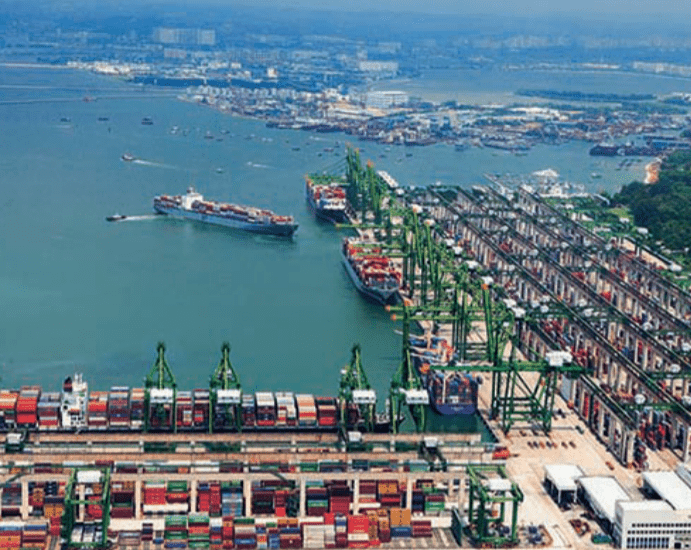
The Port of Singapore handled 39 million TEUs in 2023, showcasing a 4.6% increase compared to the previous record of 37.57 million TEUs in 2021.
The Maritime and Port Authority of Singapore (MPA) said eight berths from the new Tuas Port Phase 1 are operational and 70% of reclamation works in Phase 2 have been completed.
Cargo handling in 2023 experienced a rise to 591.70 million tonnes, up from 578.22 million tonnes in 2022. Additionally, the average monthly frequency of regional ferry trips has recovered to approximately 70% of pre-Covid levels.
Moreover, the Port of Singapore achieved a significant milestone in 2023, as the annual vessel arrival tonnage surpassed three billion Gross Tonnage (GT) for the first time, marking a notable 9.4% increase over the previous year.
This remarkable achievement, totalling 3.09 billion GT, reflects growth across various segments within the port ecosystem, encompassing container ships, dry bulk carriers, liquid bulk and chemical tankers, ferries, and specialized vessels.
Furthermore, Singapore has made commendable strides in supporting maritime decarbonization and transformation. The supply of alternative fuels and the electrification of harbour craft have progressed significantly. Bunker sales of biofuel blends soared to 520,000 tonnes, a remarkable threefold increase from 140,000 tonnes in 2022.
Also, July 2023 witnessed a historic achievement when MPA conducted the world’s first ship-to-container ship methanol bunkering operation, supplying about 300 tonnes of green methanol in the Port of Singapore.
Additionally, the deployment of fully electric 200-passenger ferries and supply vessels in 2023 within port waters exemplified Singapore’s commitment to a sustainable maritime ecosystem.
Bunker sales reached 51.82 million tonnes in 2023, surpassing the previous record of 50.64 million tonnes in 2017, reinforcing Singapore’s status as a bunkering hub. Of this, 1.2% constituted alternative fuels, with anticipated growth prospects in the coming year.
The robust performance in 2023 can be attributed to the recovery in regional trade and the effective tripartite cooperation among unions, industry stakeholders, and the government, consistently enhancing efficiency, reliability, and safety in the Port of Singapore.
Source: Container News




